Lantern
LANTERN is the adaptive reuse and transformation of a vacant bakery into a dynamic mixed-use anchor centered around the arts and education.
LANTERN is the adaptive reuse and transformation of a vacant bakery into a dynamic mixed-use anchor centered around the arts and education.
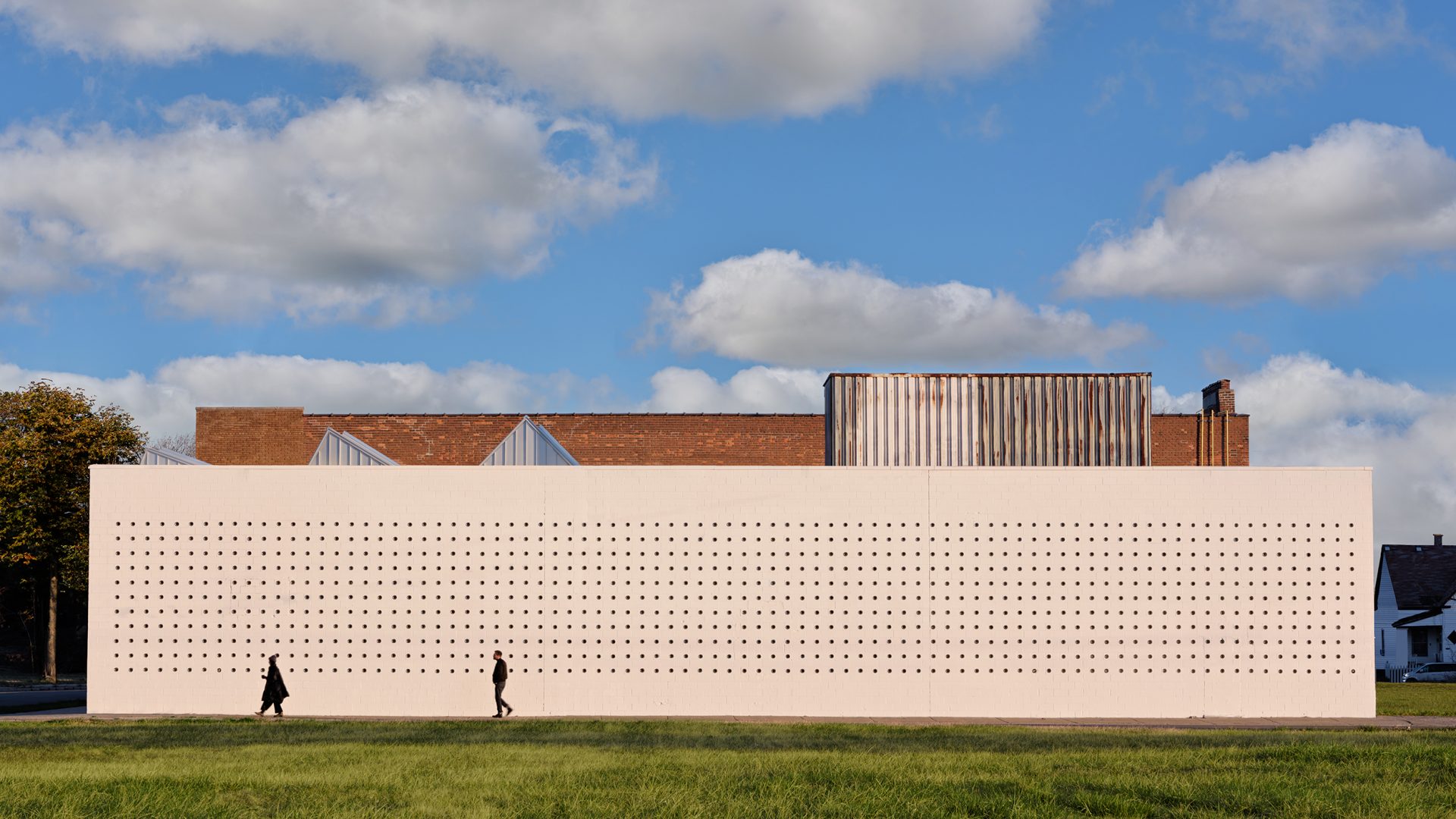
PASC and Signal-Return anchor the development at LANTERN, and occupy roughly 8,500 square feet of combined space on the main level of the building. PASC, a program of the disability services organization, STEP (Services to Enhance Potential), is the first art studio and exhibition program dedicated to supporting adults with developmental disabilities and mental health differences in Detroit and Wayne County. The new headquarters for PASC, which has served over 130 artists with disabilities to date, provides studio space, workshops, and a gallery to showcase the work of artists participating in the program. Signal-Return is a nonprofit organization dedicated to preserving and teaching traditional letterpress printing in Detroit. The new flagship location provides an opportunity to further expand upon its programming, which includes hands-on workshops, exhibitions, educational partnerships, and the sale of prints, ephemera and gifts that focus primarily on the work of Detroit-based artists.
OMA’s design took advantage of the building’s previous condition, which transformed an area missing a roof and an end wall into a courtyard at the heart of the building. Defined as the primary entrance, the courtyard is both a public, accessible gateway and a center of activity. Signal-Return and PASC’s diverse set of programs—art education, production and exhibitions—are organized within and across the existing structures to maximize access for the community. Production zones and artist studios create an active and inviting face to Amity Street; galleries line the courtyard to reinforce a public heart for the building; and neighborhood serving functions open to all are orchestrated on the opposite side of the courtyard to consolidate the most public amenities along Kercheval Avenue.
The preexisting, bricked or boarded up openings have strategically been transformed into operable windows for studios, extruded art vitrines for galleries, and larger openings for production spaces. The south building faces the intersection of two prominent streets, Kercheval and McClellan, was a solid expanse of concrete masonry (CMU). Rather than imposing a new composition of windows, 1,500 holes were drilled into the blank CMU walls and filled with cylindrical glass blocks. This monolithic field of openings subtly reveal activities within and become a glowing lantern at night.
“A living and breathing hub for the local community, Lantern is the newest example of how OMA leverages architecture as a catalyst for social change, creating the perfect foil for the Curises’ mission,” writes Siska Lyssens for Wallpaper Magazine.
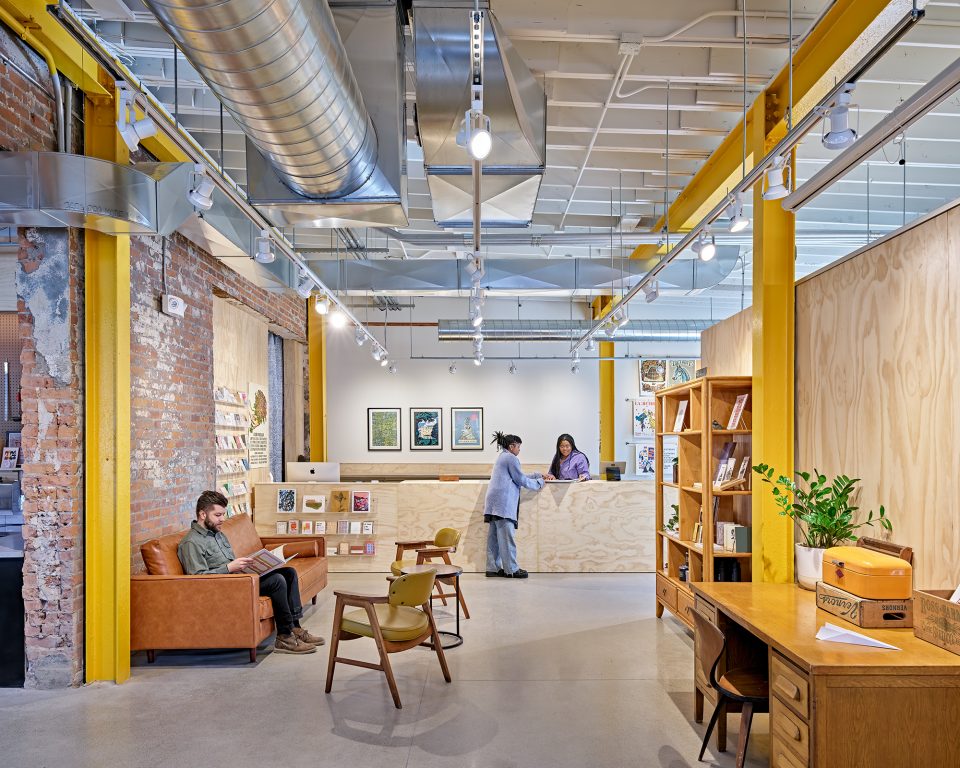
• View of Signal-Return's space. Photo by Jason Keen.
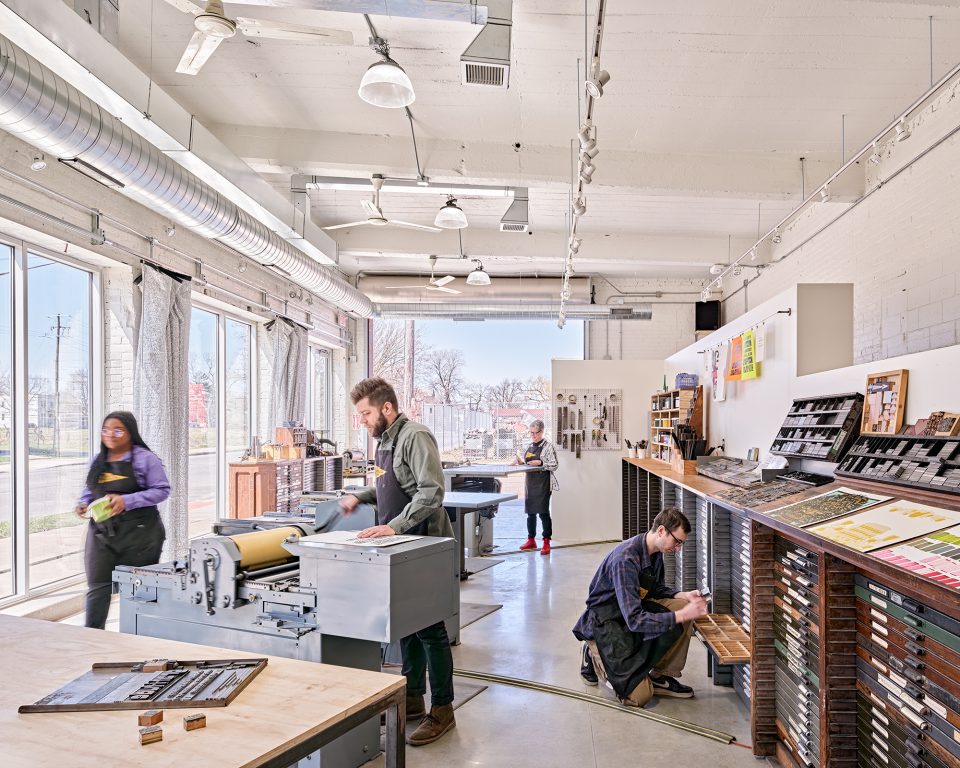
• View of Signal-Return's space. Photo by Jason Keen.
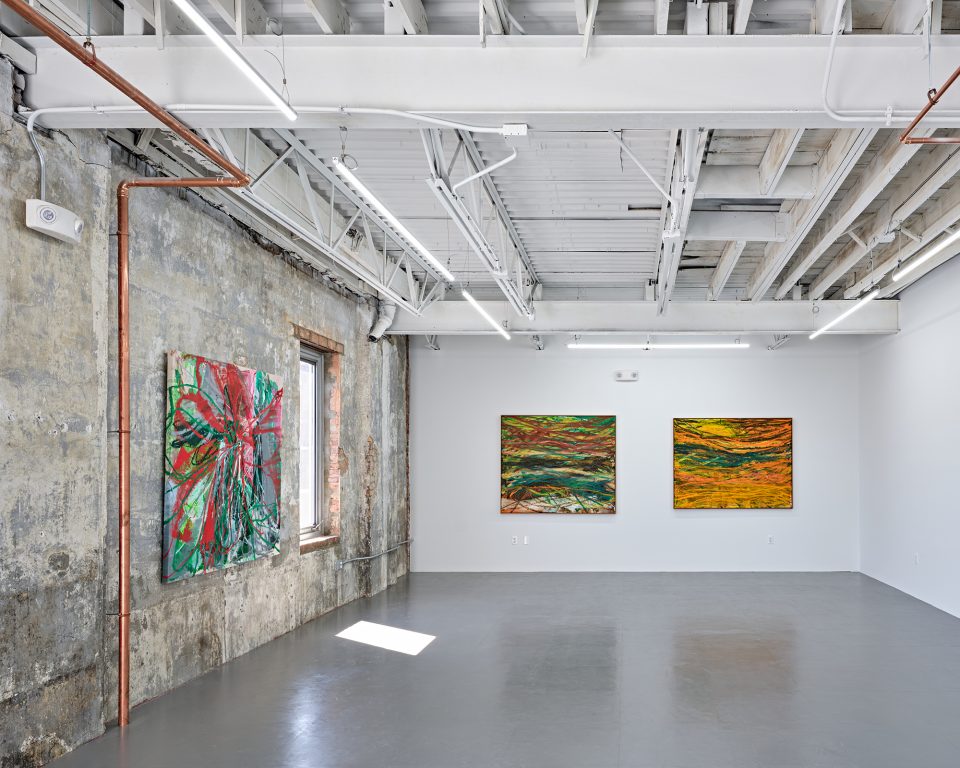
• View of Resident artist Paul Verdell's studio. Photo by Jason Keen.
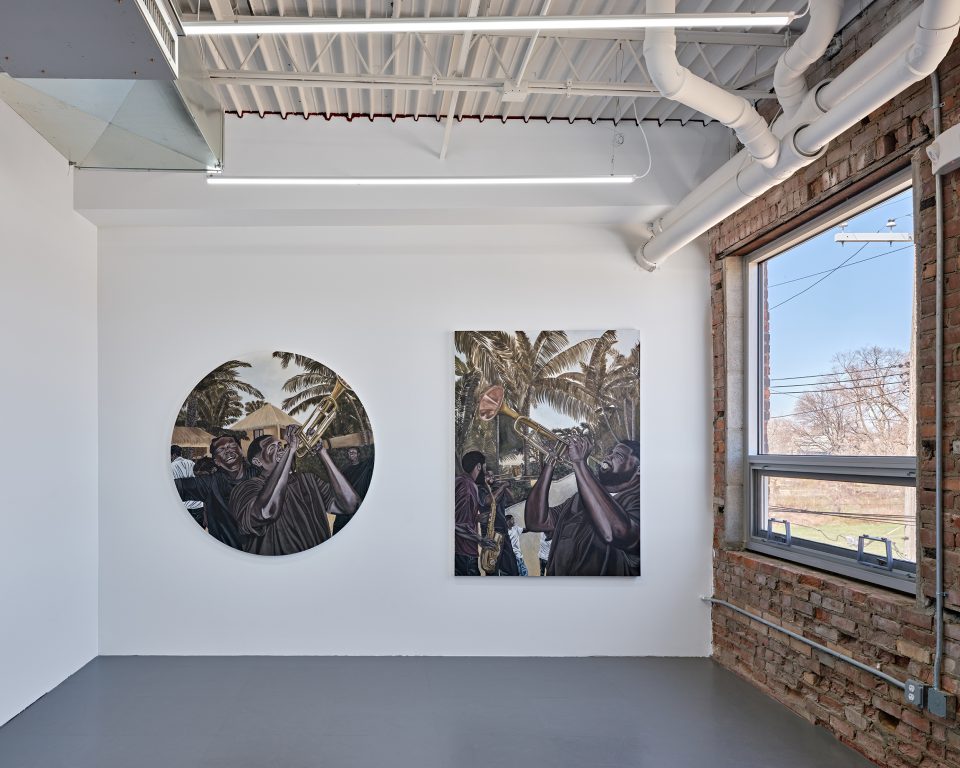
• View of Resident artist Davariz Broaden's studio. Photo by Jason Keen.
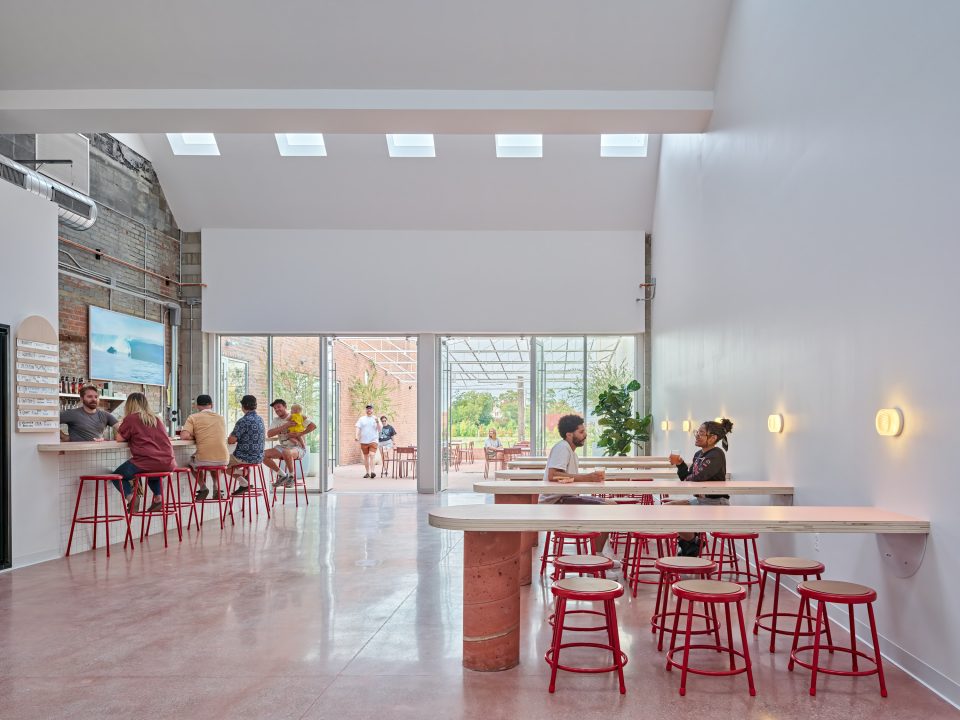
• View of Cøllect. Photo by Jason Keen.

• View of Cøllect. Photo by Jason Keen.
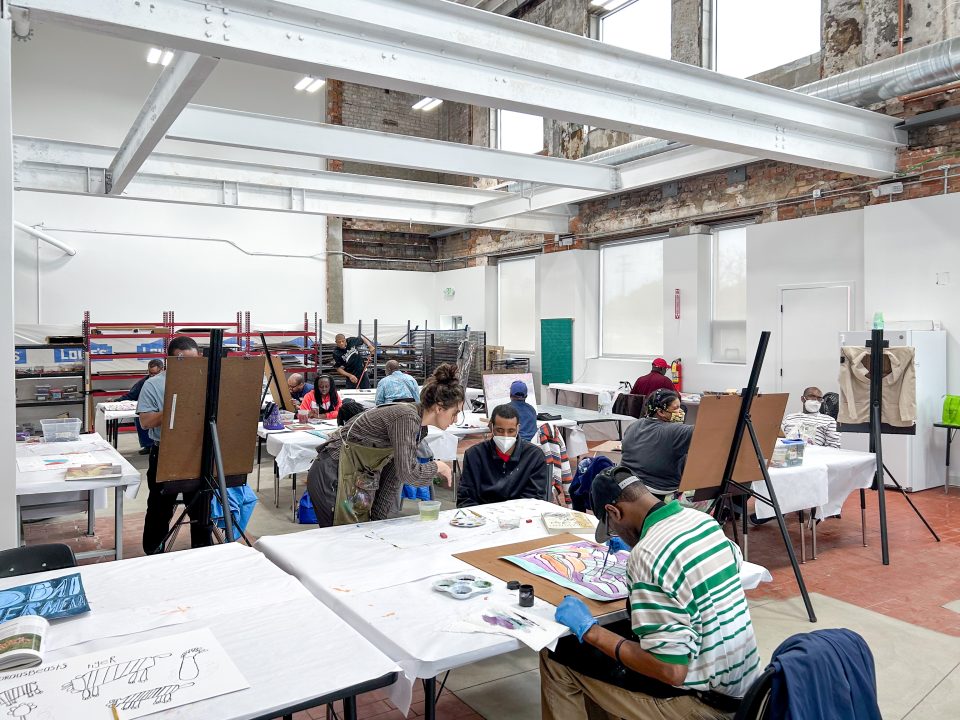
• Progressive Art Studio Collective studio space.
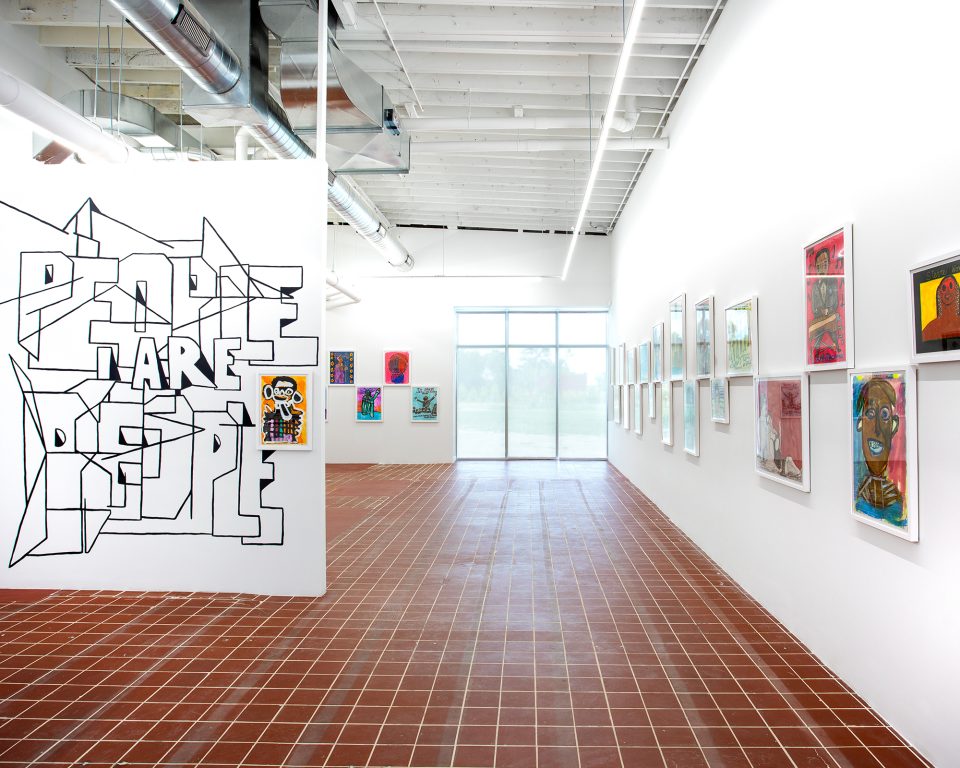
• Progressive Art Studio Collective exhibition space.
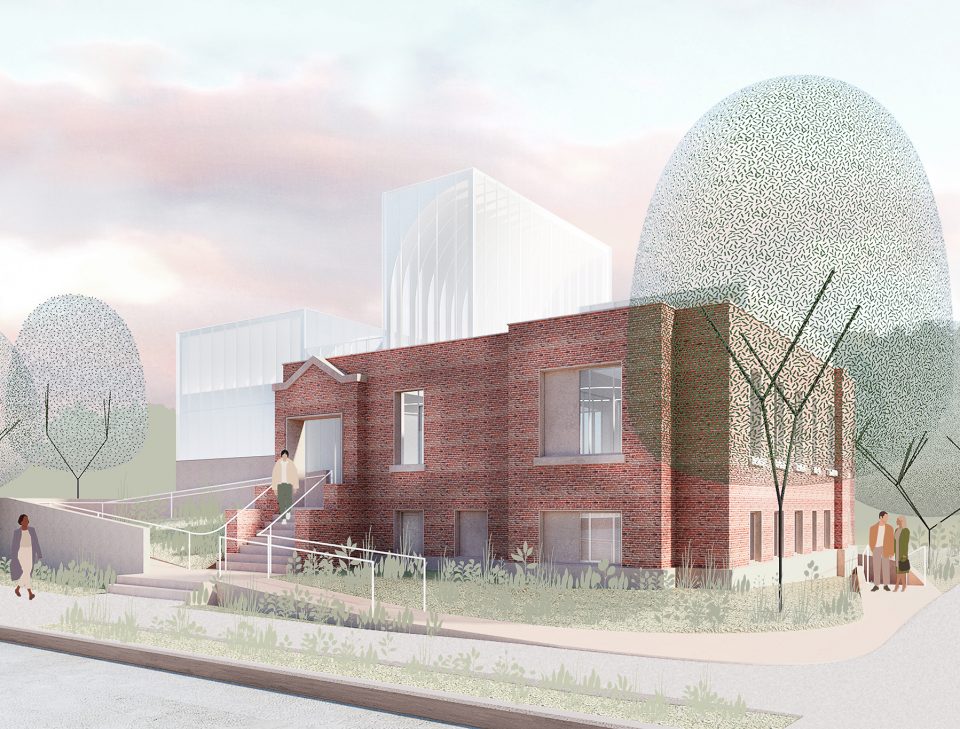
An extension of the Shepherd, a former convent site will be the new home for contemporary art gallery and project space Louis Buhl & Co. Since 2017, the gallery has rapidly evolved in its dynamic presentation of artists at all stages in their careers, with the goal of representing varied points of view and divergent practices.